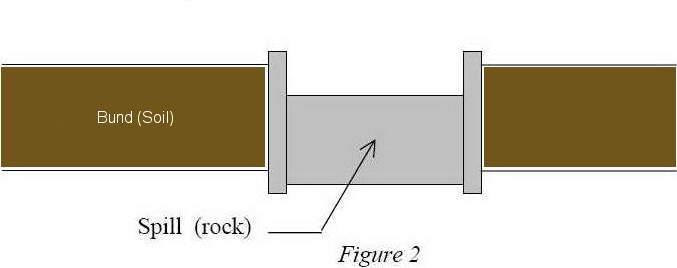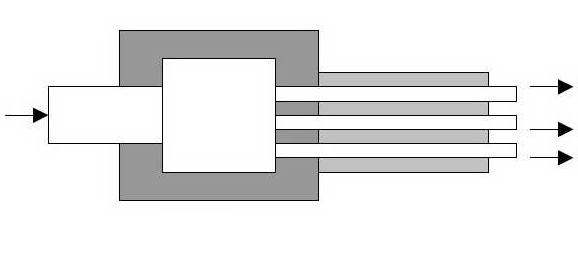King Pandukabhaya (437 BC – 367 BC)
Son of Unmadha Chitra (Queen – Suwannapali) – Capital changed to Anuradhapura
King deepened a pond in Anuradhagama, filled it with water, and took water from this pond for his consecration festival. Hence this deepened pond was called Jayavapi.
(Author’s Note: Mahavamsa states that a pond was deepened and filled with water. How it was done is not stated. It can be deduced that the pond was filled with water using a canal. Jayavapi is suspected to be Bulan Kulam in Anuradhapura).
King Pandukabhaya built a great city where Anuradha Gama was located, named it “Anuradhapura”, and made it the capital city of Lanka. He built many villages, castles, sewer systems, hospitals and cemeteries.
King Pandukabhaya built Abhaya Vapi (today known as Abhaya Wewa in Anuradhapura), a common cemetery, a place for executions, a place of worship and a house for sacrifice. King built a hermitage for Nigantha ascetics near Gaminivapi. (Here Mahavamsa accidentally mentions another reservoir – Gaminivapi, identified as Karambewa reservoir in Anuradhapura. Did Deega Gamini build Gaminivapi?)
Abhaya Wewa: Basawakkulama (400 BC) – (Author’s Note)
Only Panda Wewa is older than King Pandukabhaya’s Abhaya Wewa. Pandukabhaya was the grand son of King Panduvasdev.
Abhaya Wewa was much smaller than Panda Wewa. (Abhaya Wewa is only 330 acres compared to Panda Wewa, which is 1,360 acres). The reason for the smaller size of the reservoir could be attributed to the fact that Abhaya Wewa was built inside the capital city of Anuradhapura.
Main purpose of Abhayawewa was to provide water for the city population for drinking and bathing. The embankment of Abhaya Wewa is 5,910 feet long and 22 feet high. The slope of the embankment was found to be three horizontals to one vertical. Top of the embankment has a width of six to eight feet. Slope of Abhaya Wewa was flatter than that of Panda Wewa. It could be due to the fact that later designers decided to build the embankment stronger. Reservoirs, which were built after Abhaya Wewa, had much flatter embankments, and in some cases exceeded four horizontals to one vertical.
Author’s Note: Abhaya Reservoir (Ref: Seeing Ceylon, R.L Brohier)
“Basawakkulam (Abhaya reservoir) lying in a shallow valley with its waters held up by an earth bund whose concave side faces up-stream claims pride of place as the oldest of the three Anuradhapura city reservoirs. (Nuwara Wewa, Tissa Wewa and Abhaya Wewa). Abhaya reservoir was built after Pandukabhaya, an intelligent young King assumed rule over the kingdom. There is nothing in the structure to indicate its antiquity, but if evidence be needed of the remarkable achievement of that early unnamed hydraulic engineer who designed it, there is proof that this structure remains unbreached even after the thrilling history of Anuradhapura, with its unique records of conquests, dynastic ambitions, regal triumphs and tragedies, had ended on the crest of a mighty wave of invasion 1200 years after the city was founded”.
Author’s Note: (Components of a Reservoir):
Ancient reservoirs in Sri Lanka (Wewa) have following major components.
1. Bund or embankment to hold water. (Bund is known as “Waw Kandiya” in Sinhalese).
2. Sluice to obtain water from the reservoir. (Sluice is known as “Sorowwa” in Sinhalese).
3. Spill to remove water during major flood events. (Spill is known as “Pitawana” in
Sinhalese).
Bund: (Built using soil)

Ancient reservoir bunds were built with soil. If water flows over the bund, that bund would fail. Water should never be allowed to flow over the bund.
Spill (Pitawana): (built using rock) During flood events, water is allowed to go over the spill. Spill is built using rock. Spill will not fail when water goes over it. On the other hand as mentioned earlier, bund would fail if water goes over it, since the bund is built using soil.

Ancient Engineers had to decide whether the length of the spill is enough to remove all the water during a major flood. If the length of the spill is not enough, water would rise and go over the bund. Then the reservoir bund would fail. As mentioned earlier, water should never be allowed to go over the bund.
In the case of Kalawewa, spill was 170 feet long and 216 feet wide!. (Compare this to a length of a soccer field of 300 ft). Early British investigators believed that the spill of Kalawewa was over designed. Later studies proved that the ancient Engineer was right since flood water could accumulate very fast during major flood events and longer and stronger spill is required to remove the water quickly to save the reservoir bund.
Canals (Ela):
A large canal would carry water coming out of the sluice. This large canal would feed smaller canals.
These smaller canals would feed much smaller canals. Finally, water would end up in paddy fields.
Bisokotuwa:
“It was this invention alone which permitted the Sinhalese to proceed boldly with the construction of reservoirs that still rank among the finest and greatest works of the kind in the world. Without some efficient means of regulating the discharge of the water through the sluices, the provision of reservoirs for storing water could never have extended beyond
the minor tanks”.
(Ref: H. Parker, Ancient Ceylon)

Biskotuwa is a device used by ancient engineers to control the outflow of water from wewa with considerable heights (10-15m). As shown in figure 7, the Bisokotuwa consists of a rectangular tank connected to the sluice; in almost all the cases the longer side of the rectangle is kept parallel to the bund. Water comes from one side and leaves from the other side. Wooden sheets were placed inside to regulate the flow.
After the death of King Pandukabhaya, his son Mutaseewa was consecrated as King of Lanka.
King Mutaseeva (367 BC – 307 BC)
(Fifth King of Lanka) – Son of King Pandukabhaya
King Mutaseeva’s main work included the construction of the Mahamevna Uyana, (Mahamevna Garden in Anuradhapura). It was created with many fruit trees and flowering trees. King Mutaseewa had ten sons and two daughters. After the death of King Mutaseeva, his second son “Devanampiya Tissa” became the King of Lanka.
Bibliographic Citations: Resources and Credit
- simplified
- Comments(11)
Can you please send me the details of King Pandukabaya. actually this information for eight year old boy. therefore if can send me the detail which is relevent to the age or if you can send me the directions to obtain the details.
Thanks.
awesome information
Pls fwd me some details of king pandukabaya
this information is very useful, but can you please send more information on king panukabhaya? more about his life, his service to the existing religions at that time, his service to anuradhapura, the challenges he faced etc.
can u give me details of date of birth, death and family details of king Pandukabaya
It is somewhat good but I need about king pandukabhaya becomes the king of sri lanka
this information is very good. but i think you can enter more information.
this was very useful to me.
Pandukabhaya
The great king who brought to end of the conflict in between native Yakkas and migrated Aryanans and made a foundation for a strong nation.
King Pandukabhaya was a great king,I think. He designed Anuradhapura and one quarter was designated for the greeks who obviously must have been residing there is sufficient numbers to be recognised as a distinct group. Doubt whether they were just tourist! I would like anyone who has information from Greek literature about there being greeks in Sri Lanka in 437 BC.?
Dear Sir,
The diagram of Bisokotuwa is not so clear. Is it possible to provide with a more clear and detailed diagram with cross sectional diagram and top view.
Thanks,
Padmasiri